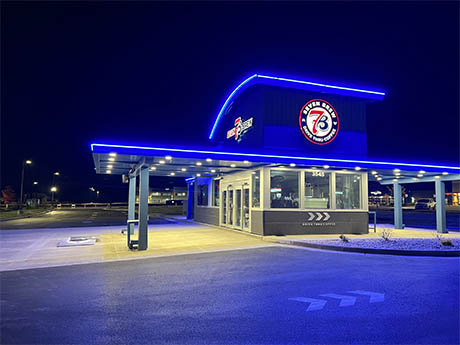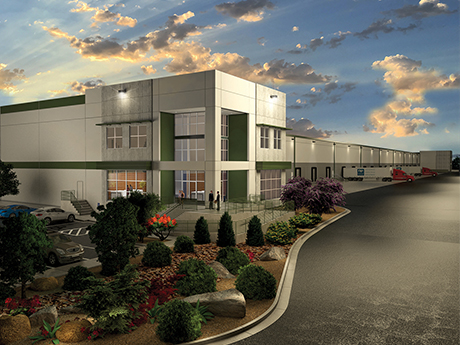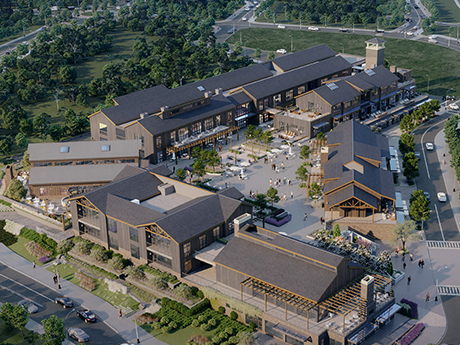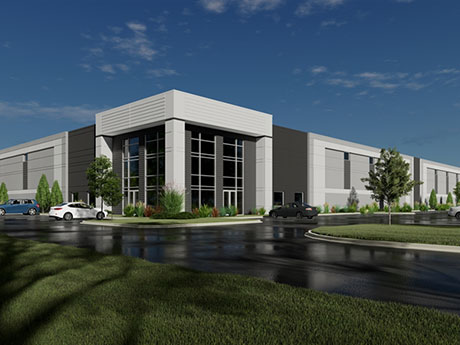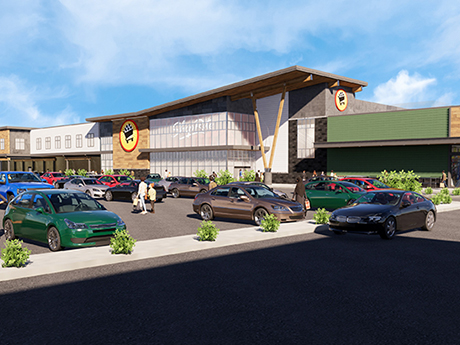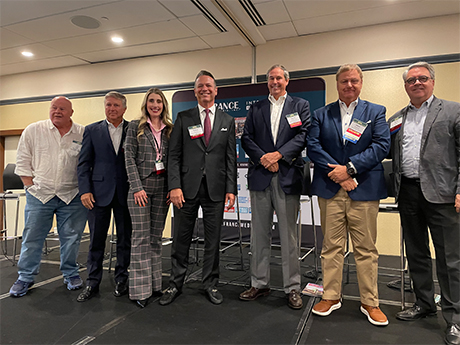As the nation’s 28th-largest city, Louisville is home to a dynamic, diversified economy. The Greater Louisville region draws workers from a 26-county area in Kentucky and southern Indiana, providing an ample and reliable source of educated and skilled employees. The geography of Louisville, specifically its accessibility to the Ohio River, central location nationally and mild climate, have contributed to its ability to grow and evolve. Additionally, reducing the income tax rate in Kentucky is a goal of the current Republican majority State Representatives to further economic development, and the Democratic governor (Gov. Andy Beshear) is also supporting this reduction as a way to help ease the burden of inflation for residents. Legislation passed in 2022 dropped the individual tax rate from 5 percent to 4.5 percent for tax year 2023, and a bill signed earlier this year by Gov. Beshear drops it again for 2024 to 4 percent. The goal is to ultimately get income tax rates down to zero, or very close to zero, in 50-basis-point steps as certain budget metrics are hit. These measures seem to be working for growth in the Commonwealth. One of the more notable capital investment projects is the Ford partnership BlueOval SK Battery …
Market Reports
— By Nellie Day — Everyone is tired of hearing about the challenging lending climate — no one more so than investors and developers who would like to keep the gravy train moving. “I think the glory days of the last four to five years are now tempered with the increased interest rates,” says Jordan Schnitzer, president of Portland, Ore.-headquartered Schnitzer Properties. “I also believe the hyper growth of big box industrial developments over 500,000 square feet is grinding to a slower halt. A significant amount of that growth has been from Walmart, Amazon and other large retailers that now may have enough space for the next several years before they enter a growth phase again.” So, what’s an industrial player to do when interest rates are high and the industry darlings that have been so active for so long now say their needs have been met? You pivot. “While it’s easier to collect a single check from a 500,000-square-foot tenant, we would rather roll up our sleeves and work harder to get 50 tenants from a 500,000-square-foot building,” Schnitzer continues. New Strategies For A New Era Schnitzer notes that his firm began to see cap rate compression on Western-based industrial …
In the second quarter of 2023, the Richmond office market posted more than 670,000 square feet of leasing volume, the highest total volume in more than four years. As transactions commence in future quarters, absorption will be impacted from occupancy shifts later in the year. Despite increased leasing activity, however, the market softened slightly as absorption has started to plateau. The second quarter represented the fourth consecutive quarter of negative net absorption as Richmond’s office market observed occupancy losses dipping to 21,489 square feet. Vacancy rates rose and settled at 12.6 percent, an 8-basis-point increase quarter-over-quarter. Pre-pandemic, overall asking rents saw stable upward rent growth. Since 2020, rental rates have continued to increase though at a leaner rate. Class A rents have flattened over the past 12 months, while Class B rents continued to rise. The Manchester and Scott’s Addition submarkets remain the hot spots for office development. Though there are currently no major office buildings underway at this time, most major office projects under construction in the last five years have either been build-to-suits or conversions. The only notable exception to this was The Current, a 70,000-square-foot spec office building that delivered in Manchester at the end of 2021. …
— Jennifer Seversen, Vice President, CBRE — Suburban retail is emerging as the main driver of retail growth in Seattle. In the height of the pandemic, many consumers stayed close to home, rediscovered their neighborhoods and began shopping primarily in their communities. These habits have continued and, as a result, retailers on once-heavily trafficked commute paths have experienced declining sales revenue. Retailers are taking notes, particularly those in city office districts that rely heavily on daytime foot traffic. The white-hot activity in suburban retail has led to vacancy rates under 2 percent, healthy rent growth and record-breaking absorption within new developments. Rents in suburban markets like Totem Lake, Bothell and Woodinville are outpacing downtown Seattle by 50 percent, something that would not have been conceivable three years ago. Well-located mixed-use retail projects and neighborhood centers have led the way in pushing rent growth, while grocery-anchored developments have been attractive assets to investors. Restaurants have proven to be a major driver of retail activity, with Seattle having a 7 percent increase in diners year over year through the second quarter, the fifth highest increase in the U.S., according to OpenTable. An example of the rise in suburban retail demand is Harvest, …
By Mike Mangan, Cresa We knew it would happen, it was just a matter of time: The industrial real estate market is currently experiencing a cooling trend in Chicago and across the country. The best-performing asset across all commercial asset classes for the past several years is finally coming back to earth due to higher borrowing costs and a slowdown in demand. Rental rates are beginning to level off and many economists are predicting a reduction in consumer spending. The industrial sector had been able to flourish despite economic headwinds, with demand during the pandemic heavily focused on e-commerce activity. The supply versus demand is shifting, and this should be welcome news to tenants in the market or who will be in the market in the next 12 to 24 months. Indicators are not pointing toward a crash landing, but a return to earth for the golden child of the commercial real estate asset classes. Tenants and occupiers will be able to utilize the additional supply coming to market to secure better economics and concessions. The facts Let’s first take a look at the national landscape. The U.S. unemployment rate in August was 3.8 percent — higher than predicted by …
— By Dina Gouveia and Louis Thibault — The San Francisco market ended the second quarter of 2023 with a 27.2 percent vacancy rate for the office sector, according to Avison Young’s market report. As companies scaled back operations and experienced slower growth, vacancy rates continued to increase. As of late, we are seeing many tenants in a wait-and-see mode when it comes to leasing decisions. This is despite a majority of companies desiring to have employees back in the office. Below are a few key trends and observations when it comes to the office market, as well as some green shoots where we see opportunities for an accelerated recovery. Return to the Office The slow return to office (RTO) largely comes down to overall economic conditions and who has the upper hand in the job market. The trend that we’ve seen in the San Francisco region is that larger tech companies like Apple and Google have led the RTO efforts with CEOs like OpenAI’s Sam Altman opining that remote work is essentially detrimental to collaboration and creativity. It appears there is a widespread appetite to bring employees back into the office full-time. As the job market continues to soften, …
Orlando’s industrial market continues to maintain strong market fundamentals. Despite leasing activity temporarily softening at the midway point of 2023 compared to the end of second-quarter 2022, exceptionally low vacancy rates persist, putting upward pressure on asking rental rates and further strengthening developer confidence in the market. With its strategic locational advantages and diverse tenant mix, the sector is well-positioned for future growth. According to Florida Commerce, Orlando’s unemployment rate is 2.6 percent, well below the national rate of 3.6 percent. Labor shortages remain, as jobs increased by 5,300 in the industrial-using sector and 6,200 in trade, transportation, and utilities. At the same time, Central Florida’s population growth — along with the state’s business-friendly conditions, from no state income tax to relative affordability — consistently spurs demand for e-commerce logistics and warehousing throughout the region. Asking rates surge Year-to-date industrial leasing volume in Orlando has been 4.4 million square feet, 2.4 million square feet of which was in the second quarter. Total vacancy stood at 3.5 percent in the second quarter, significantly lower than the national vacancy rate of 5.4 percent. The average asking rate for industrial properties in Orlando was $10.77 triple-net per square foot, reflecting a 5.4 percent …
By Taylor Williams No matter your size, market and scope of operation, for retail owners and operators, there is no such thing as total immunity from the likes of e-commerce, COVID-19, inflation and interest rate hikes. But there is such a thing as absorbing those socioeconomic hits in stride, learning and evolving from them and re-emerging on significantly more solid ground. And that is largely the path that the Philadelphia retail market has traversed over the past few years. The timing of the pandemic dismantled the launch of Fashion District, the redevelopment of the former Gallery at Market East Mall that should have ushered in a new scene of experience-based, locally merchandised retail in Philadelphia. Retailers and restaurants along Center City District’s main shopping corridors quickly devised solutions to the global healthcare crisis and were returning to normalcy when bad timing once again intervened. This time, it took the form of the Delta variant, which delayed plans to reopen existing stores or launch new ones and erased some of the positive momentum that landlords and tenants had recouped. For their part, suburban retail properties, many of whose performances were bolstered in the short run by pandemic- driven population influxes, are …
By Taylor Williams Brick-and-mortar retail has quietly, yet emphatically resurrected itself from the e-commerce- and COVID-induced death knell, bolstered by multiple years of low supply growth that have put a premium on quality space and allowed landlords to zero in on what truly constitutes a winning concept. This notion is inherently subjective and difficult to quantify. But in Dallas-Fort Worth, retail owners and operators say that authenticity — as defined by uniqueness of the offerings and adherence to and reflection of local culture — is paramount to success. From the presentation and packaging of products and services to utilization of local architectural styles to creating a certain shopping or dining ambiance, the ability to capture the authenticity of the market is crucial. Consumers and landlords can afford to be choosy, and they won’t waste time at stores, restaurants or entertainment venues that feel cookie-cutter, phony or out-of-place. But retail landlords can ill-afford to do deals with tenants that simply look the part but lack the financial ability to pay rents, which are growing in urban locations where availability of space remains tight. Monetary due diligence remains critical, but as often as not, there is considerable overlap between the financial solvency …
The demand for retail space throughout Central Florida has been extremely high as new concepts are moving into the marketplace due to the mass exoduses from New York City and California. With the major population shift, we are running into the issue of limited supply to lease. Vacancy rates are currently projected at 3.8 percent, which is approximately 100 basis points below the 10-year historical average. Vacancy rates are projected to meet the mid-4 percent range by the end of 2023 due to the expected completion of more than 700,000 square feet of retail space during the fourth quarter, according to research from CoStar Group. Some developers are backing out of ground-up development deals due to the heightened labor and construction costs that every firm is experiencing. However, there are still some notable developments occurring in certain trade areas such as Minneola, Lake Nona, Apopka (Kelly Park) and Davenport, which are just some of the areas with projects expected to deliver in the fourth quarter of this year. These new ground-up projects require lessees to pay a higher rent to make these deals pencil out. The current average asking rate in Orlando is $27.77 per square foot, well ahead of …


